Tower of Power’s axis – Emilio Castillo (tenor sax) and Stephen ‘Doc’ Kupka (baritone sax) – first joined forces way back in 1968. The band’s debut album East Bay Grease was released in 1970, and notable follow-ups were 1972’s Bump City, 1973’s Tower of Power, and 1974’s Back to Oakland. Castillo and Kupka co-wrote most of the band’s songs including funk workouts like “What Is Hip?” and “You Got to Funkifize”, and soulful ballads like “Time Will Tell” and “So Very Hard to Go”. In addition to giving us their own hits, the Tower of Power horn section has appeared on recordings by numerous artists over the years, including Little Feat, Elton John, Huey Lewis and the News, Aerosmith, and many others.
This interview with Emilio Castillo was for a preview article for Tower of Power’s concert at the Granada Theatre in Santa Barbara on 12/6/14. It was done by phone on 11/26/14.
Jeff Moehlis: What can we look forward to at the upcoming show?
Emilio Castillo: It’s a Tower of Power show, and most people that come to Tower of Power know what to expect. It’s a high energy show, a lot of uptempo original soul music, and a lot of emotional heart-wrenching ballads. Obviously the horn section is very prominent in the band, and we have one of the funkiest rhythm sections in the business today.
I think the real surprise for people this year is going to be our new singer Ray Greene. He started at the beginning of the year this year, and is just amazing. People are receiving him so well, and it’s so exciting that he sings so great. That, to me, will be the biggest thing about the show this time.
JM: How did you find Ray Greene?
EC: We did an all-out search over the internet, put word out through all the social media. We had a form for people to fill out giving us basic info about themselves. We asked for YouTube videos and mp3’s and references. Ray, I found out about through a guitar player I know. He sent me an email that said, “I hear you’re looking for a singer. You need to check out this guy Ray Greene.” He sent me a YouTube link. I was impressed with it, but then I was looking on the side at the other videos, and there were several with him in it. And there was one in particular where he was really, really exciting and soulful. I could tell he had the range, he had the look, seemed like a very personable guy from the stage, and so I told him to give him my info and give me his. When I met him on the phone, he was just really humble and respectful. So we wound up inviting him down to audition.
What happened was the day that he was going to audition, it was at a soundcheck we were doing in New Jersey, and our singer had at the last minute told us that he couldn’t do the gig, that he took another gig somewhere. We were kind of left in the lurch, and I told the guys, “I’ve got a good feeling about this guy Ray Greene. What if we just call him and tell him to learn six more songs and have him do the gig tonight?” They all agreed – they all had a good feeling about him, too. And he did the gig that night. We had never even met [laughs]. That was the first time we met him in person, that night. And he killed it. We knew that night that he was the guy we wanted. Then over the next couple of months we tried several other singers and did some talking back and forth with Ray, and he consented to come into the band and we’re very happy about that.
JM: I find it amazing that you and Doc have been musical partners for so long, since 1968, and of course you co-wrote so many of the Tower of Power songs together. Can you describe the chemistry that you two share with each other?
EC: Well, for one thing, when I met him it was immediately evident to me that he was a real character. He was really the first hippie that I ever knew. He was a real character, in a really soulful way, too. He had a real passion for soul music, and he was impressed with our band. I offered him an audition, and he came and he auditioned and everybody liked him immediately. My dad – I was a teenager living at home – my dad actually called me into the house and said, “Hire this guy. He’s got something.” I said, “He does, huh?” And I hired him that day. It was immediately clear that we had the same passion for soul music. We’ve been close friends ever since.
JM: I have to ask, how is [Tower of Power bassist] Rocco doing?
EC: He is very ill – he needs a kidney. But I’m happy to say that he’s getting a kidney transplant on December 5th.
JM: If you don’t mind going way in time, can you tell me a bit about playing at the Fillmore back in the early days of the band?
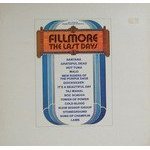
EC: Playing at the Fillmore was always a real exciting gig. It was the place to play. Bill Graham was the promoter at the Fillmore, and whenever we played he would introduce us. He’d always come backstage and hang with us a little bit. It was just really exciting. That was really the number one gig to play anywhere in the world at that time. We became quite popular there at the Fillmore West, and Bill loved us. We always looked forward to it, and we always played well, but at the Fillmore we would really rise to the occasion – we did some really spectacular shows there.
JM: Were there any other Bay Area bands back then that you were particularly a fan of?
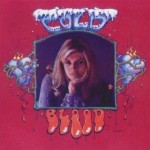
EC: Yeah, I was a fan of Cold Blood. They were friends and a similar kind of band – they had a horn section and played soul music. I was a fan of a band called The Loading Zone, which was another hippie soul band. They had a big, black lady named Linda Tillery singing for them, and they had three horns. We were all very friendly. We actually shared a rehearsal hall with them. I was also a fan of Boz Scaggs. That’s all that come to mind right now.
JM: I read that you guys did a tour with Sly and the Family Stone. Is that correct?
EC: We toured with them. Not long tours, but we would do a series of dates. I think one time we did like 10 dates with them, and other times we would do 2 or 3 or 4 dates with them at a crack. I played with them several times.
JM: Sly had a reputation for always being late to gigs and canceling gigs. What was your experience like when you toured with them?
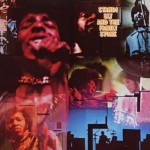
EC: Well, he already had that reputation by the time we gigged with him. I don’t know if you know this, but before I even started Tower of Power I used to watch Sly Stone every weekend at Frenchy’s in Hayward. He had a one-year contract at that nightclub before he became famous. And so we watched him every night. We idolized him and his band. So I was very familiar with them. I didn’t know them personally. I was a young kid, and they were heavyweights. But by the time we played with him it was years later, we were both established acts, and he had already sort of developed that reputation for being undependable.
We had a few instances with him where it got a little weird. One time we were playing the Michigan Palace in Detroit. He always liked Doc, so Doc went by to say hello to him, and they called him into the dressing room and before Doc knew it the door shut behind him and this big bodyguard was guarding the door. And Sly proceeds to tell him that he had a dream, and in the dream Doc joined his band. And he needed to make that commitment right there and then. Doc was like, “Me and Emilio have Tower of Power. I’m in that band.” And he said, “Yeah, but I had the dream so we’re going to need you to make that commitment right now, before we let you out of here.” The bodyguard was blocking the door, and he got all scared. But finally Sly lightened up and let him out of there. That was kind of the weirdest thing that happened between the two bands.
Another time we played with them at the Philadelphia Spectrum, and it wasn’t Sly’s best night and we had a very good night. The following week on Monday our manager [Ron Barnett] called Ken Roberts, his manager. He was calling about some sort of business thing, but Ken took it as, “Oh, you’re calling to rub it in,” and he started screaming at our manager, “You don’t need to rub it in!” And Ron was like, “What are you talking about? [laughs] So Sly had an off night.”
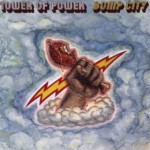
JM: Can you tell me how the song “You Got to Funkifize” came together?
EC: Doc came up with the title. We knew immediately that we were going to write that song and what it was going to be like. I remember we had just written it, and we were in this car – me and Doc – and in the backseat was Skip Mesquite, our sax player at the time. We were talking about the song – we said, “We wrote this song called ‘You Got to Funkifize'”. And he goes, “Funkifize? What kind of word is that?!” I started to sing it, and when he heard me singing it he realized how soulful it was. “God, you guys did it again.” He was kind of upset about that. We just knew it was going to be a song about dancing and playing soul music. It’s an exciting tune.
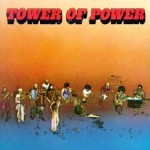
JM: Same question for a different song. How did “What Is Hip?” come together?
EC: “What Is Hip?” is another one that was Doc’s concept. He said, “I want a song called ‘What Is Hip?” And I said, “What do you mean, ‘What Is Hip?'” He goes, “You know, everybody’s trying to be hip, but as soon as you do something that’s hip, within a matter of days it’s not hip anymore. So I want to write a song called ‘What Is Hip?’ Is it growing your hair long? Is it bell-bottom pants? Is it hanging out with a guru? Is it smoking pot? You can’t really be hip because hip is elusive – once you get it, it’s gone.” I was like, “Yeah, that’s cool.” So we sat down. The tune just kind of came out. We wrote it with [drummer] David Garibaldi, but really it was mostly Doc and myself. Dave chimed in later with that 16th-note groove and a lot of the rhythm section stuff.
JM: The Tower of Power horn section has played with an amazing collection of artists. Are there any of those that you played with that really stick out to you the most?
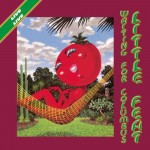
EC: Some of the work we did with Little Feat. We did most of their records, but the one that was most famous was the live record Waiting For Columbus. They had asked us to go on their little tour and record this live record with them. So that was a big deal, and it really did come out great. Over the years people always comment about that.
I’m very fond of the work we did with Little Feat, with Elton John, but we did a lot of great work with a lot of different artists. Bobby Caldwell, we did an album called Carry On – it was the rhythm section of Toto and our horns. I’m very proud of that work.
JM: Today is the day before Thanksgiving. What does a musician such as yourself do for Thanksgiving?
EC: Well, I live in Arizona and I don’t really have family here. It’s just me, my wife, and my kids. We just spend the whole day with family. We’re all Christians, we’re all in the church, we’re believers in Jesus Christ, so we give a lot of things to the Lord on that day. But we do that every day. It’s just a great day to be with family and be grateful for everything.

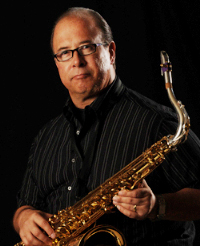
Discussion
No comments for “Interview: Emilio Castillo”